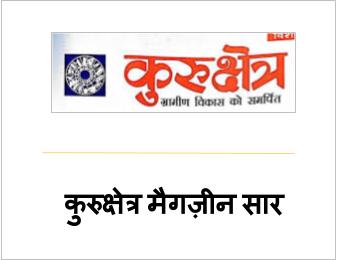
UPSC Mains Exam Syllabus - Animal Husbandry and Veterinary Science (Optional)
::Paper – 1::
1. Animal Nutrition
Energy sources, energy, metabolism and requirements for maintenance and production of milk, meat, eggs and wool. Evaluation of feeds as sources of energy.
1.1. Trends in protein nutrition: sources of protein metabolism and synthesis, protein quantity and quality in relation to requirements. Energy protein ratios in ration.
1.2. Minerals in animal diet : Sources, functions, requirements and their relationship of the basic minerals nutrients including trace elements.
1.3. Vitamins, Hormones and Growth Stimulating, substances : Sources, functions, requirements and inter-relationship with minerals.
1.4. Advances in Ruminant Nutrition-Dairy Cattle: Nutrients and their metabolism with reference to milk production and its composition. Nutrient requirements for calves, heifers, dry and milking cows and buffaloes. Limitations of various feeding systems.
1.5 Advances in Non-Ruminant Nutrition-Poultry-Nutrients and their metabolism with reference to poultry, meat and egg production, Nutrients requirements and feed formulation and broilers at different ages.
1.6 Advances in Non-Ruminant Nutrition-Swine-Nutrients and their metabolism with special reference to growth and quality of meat production, Nutrient requirement and feed formulation for baby-growing and finishing pigs.
1.7. Advances in Applied Animal Nutrition-A critical review and evaluation of feeding experiments, digestibility and balance studies. Feeding standards and measures of food energy. Nutrition requirements for growth, maintenance and production. Balanced rations.
2. Animal Physiology :
2.1 Growth and Animal Production : Prenatal and postnatal growth, maturation, growth curves, measures of growth, factors affecting growth, conformation, body composition, meat quality.
2.2 Milk Production and Reproduction and Digestion : Current status of hormonal control of mammary development, milk secretion and milk ejection. Male and Female reproduction organ, their components and function. Digestive organs and their functions.
2.3 Environmental Physiology : Physiological relations and their regulation; mechanisms of adaptation, environmental factors and regulatory mechanism involved in animal behaviour, methods of controlling climatic stress.
2.4 Semen quality : Preservation and Artificial Insemination-Components of semen, composition of spermatozoa, chemical and physical properties of ejaculated semen, factors affecting semen in vivo and in vitro. Factors affecting semen production and quality preservation, composition of diluents, sperm concentration, transport of diluted semen. Deep Freezing techniques in cows, sheep and goats, swine and poultry.
Detection of estrus and time of insemination for better conception.
3. Livestock Production and Management :
3.1 Commercial Dairy Farming-Comparison of dairy farming in India with advanced countries. Dairying under fixed farming and as a specialised farming, economic dairy farming, Starting of a dairy farm. Capital and land requirement, organisation of the dairy farm.
Procurement of goods; opportunities in dairy farming, factors determining the efficiency of dairy animal, Herd recording, budgeting, cost of milk production; pricing policy; Personnel Management. Developing Practical and Economic ration for dairy cattle; supply of greens throughout the year, field and fodder requirements of Dairy Farm, Feeding regimes for day and young stock and bulls, heifers and breeding animals, new trends in feeding young and adult stock; Feeding records.
3.2 Commercial meat, egg and wool production: Development of practical and economic rations for sheep, goats, pigs, rabbits and poultry. Supply of greens, fodder, feeding regimens for young and mature stock. New trends in enhancing production and management. Capital and land requirements and socio-economic concept.
3.3 Feeding and management of animals under drought, flood and other natural calamities.
4. Genetics and Animal Breeding :
Mitosis and Meiosis; Mendelian inheritance; deviations to Mendelian genetics; Expression of genes; Linkage and crossing over; Sex determination, sex influenced and sex limited characters; Blood groups and polymorphism; Chromosome aberrations; Gene and its structure; DNA as a genetic material; Genetic code and protein synthesis; Recombinant DNA technology, Mutations, types of mutations, methods for detecting mutations and mutation rate.
4.1 Population Genetics Applied to Animal Breeding: Quantitative Vs. qualitative traits; Hardy Weinberg Law; Population Vs. individual; Gene and genotypic frequency; Forces changing gene frequency; Random drift and small populations; Theory of path coefficient; Inbreeding, methods of estimating inbreeding coefficient, systems of inbreeding; Effective population size; Breeding value, estimation of breeding value, dominance and epistatic deviation; partitioning of variation; Genotype X environment correlation and genotype X environment interaction; Role of multiple measurements; Resemblance between relatives.
4.2 Breeding Systems : Heritability, repeatability and genetic and phenotypic correlations, their methods of estimation and precision of estimates; Aids to selection and their relative merits; Individual, pedigree, family and within family selection; Progeny testing; Methods of selection; Construction of selection indices and their uses; Comparative evaluation of genetic gains through various selection methods; Indirect selection and Correlated response; Inbreeding, upgrading, cross-breeding and synthesis of brees; Crossing of inbred lines for commercial production; Selection for general and specific combining ability; Breeding for threshold character.



